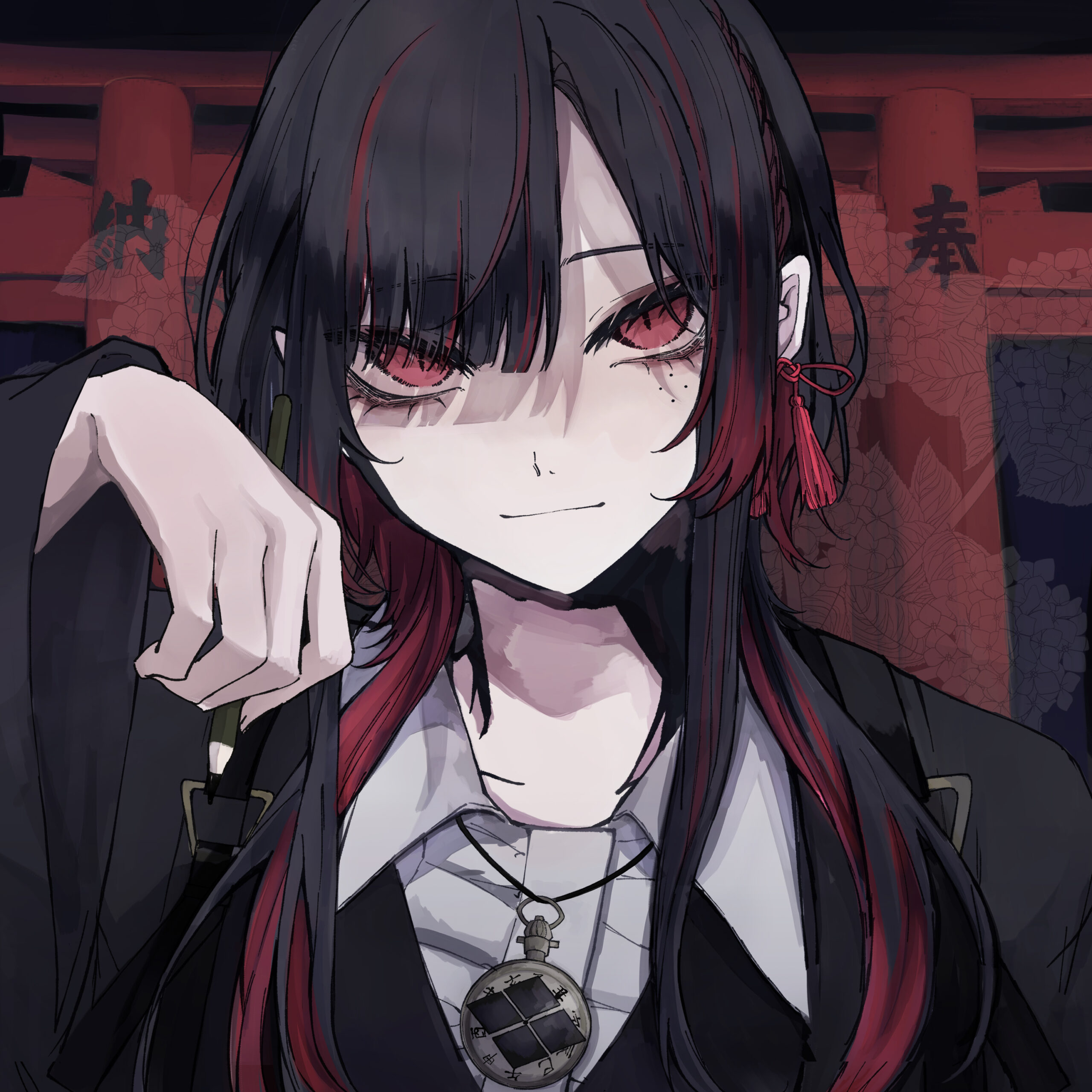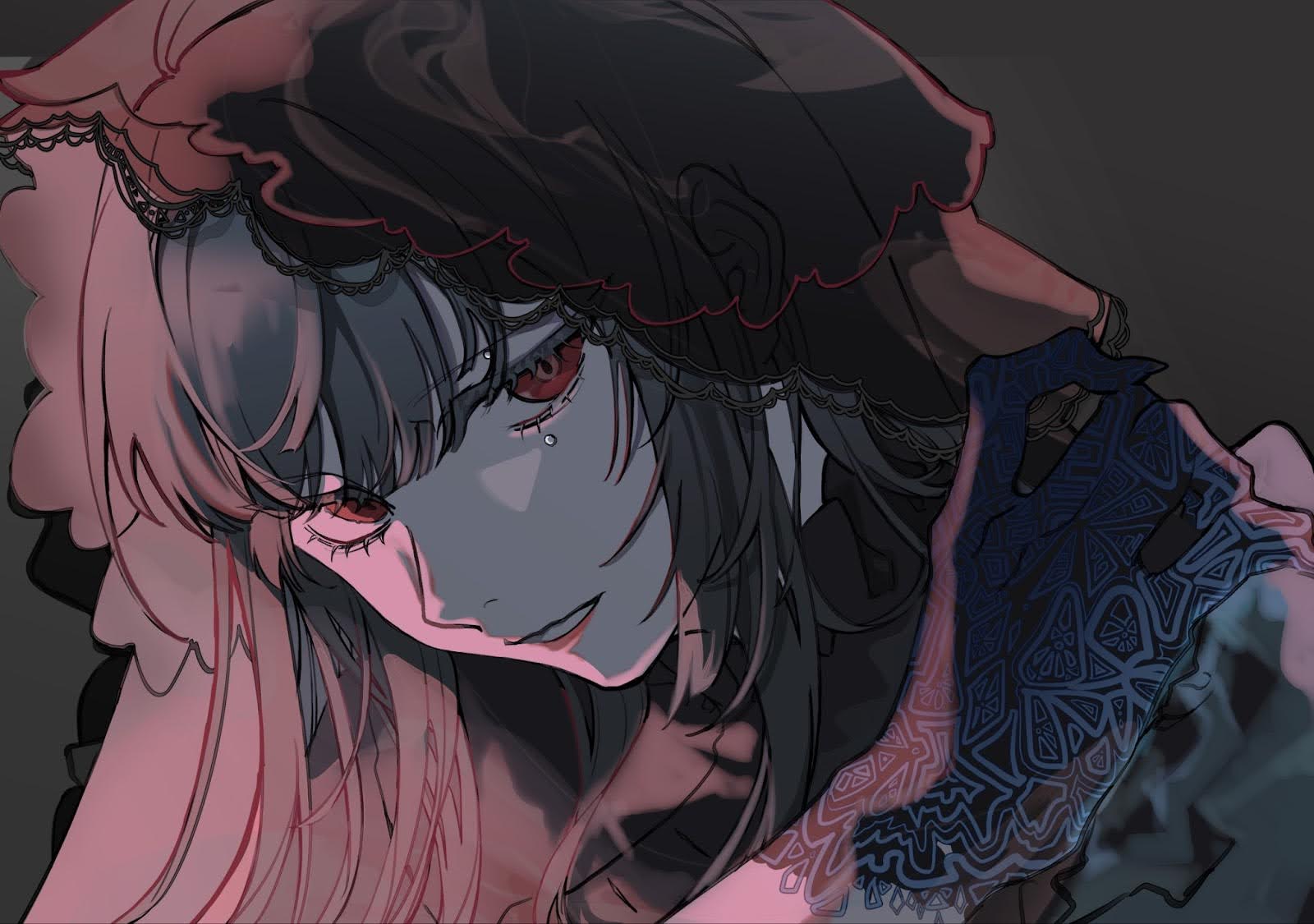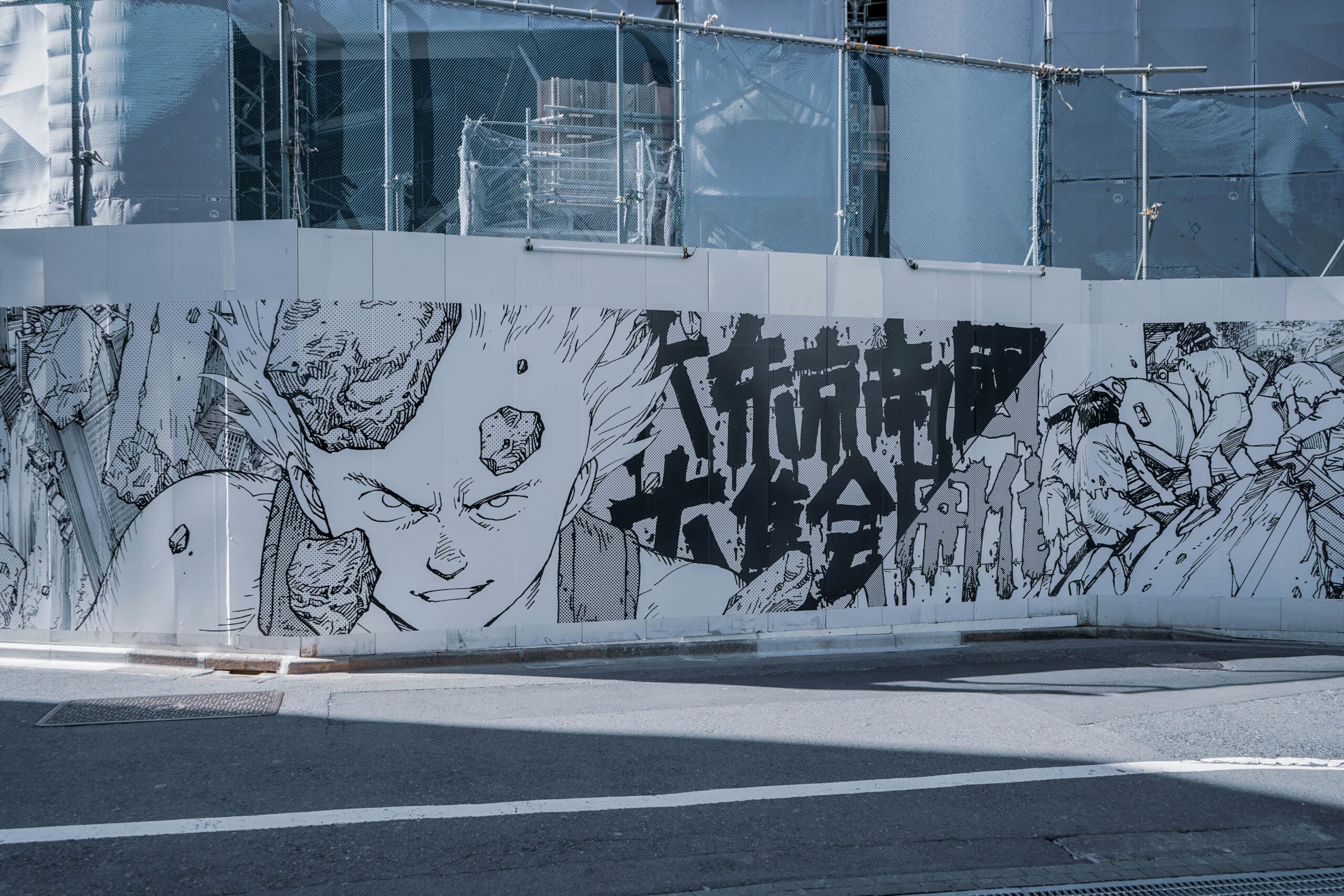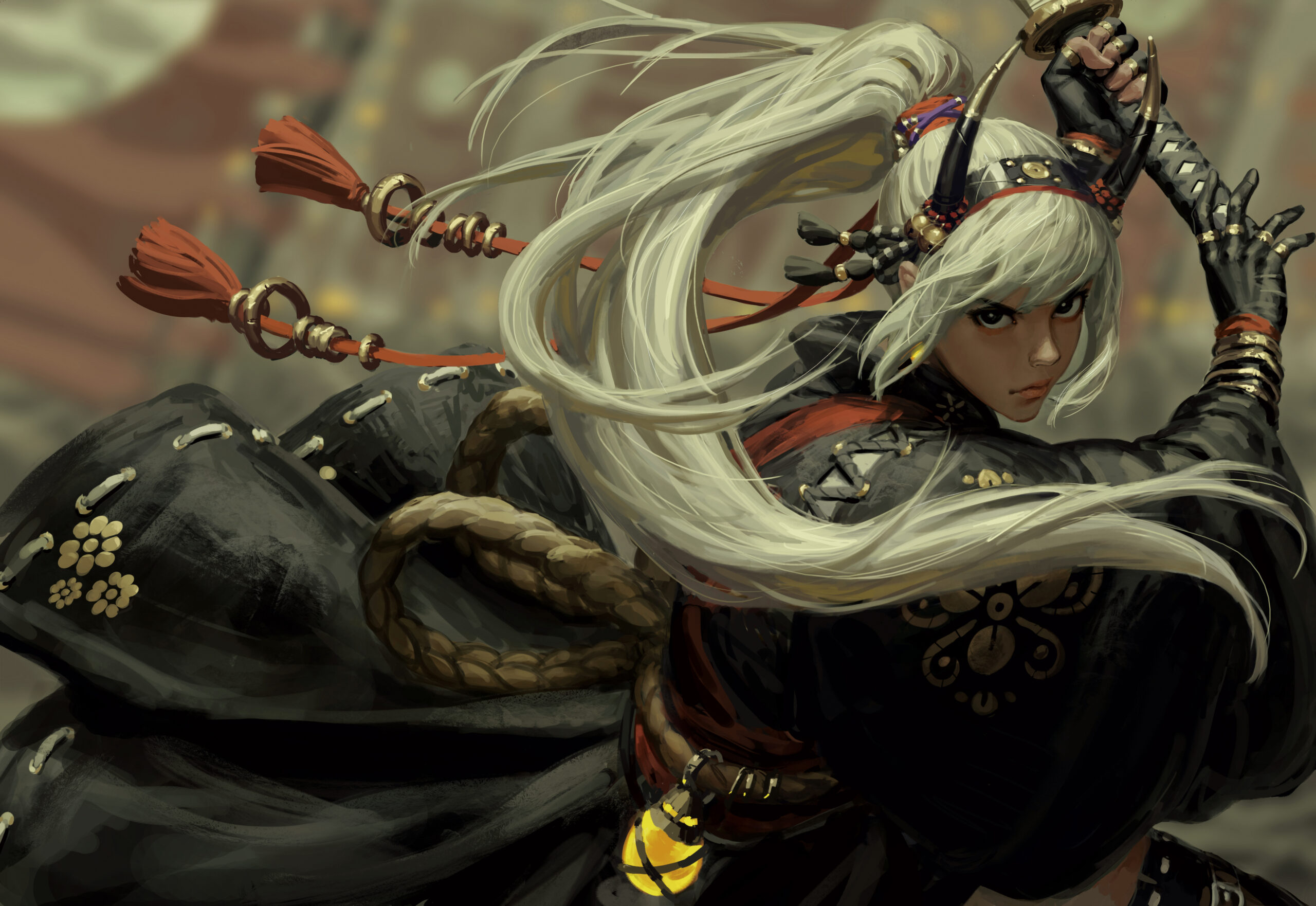The fragility beneath the strength, faces and expressions that speak in silences. Veiled beneath is the toxic haze that shrouds it all – is it sorrow, or a calm, unspoken surrender that we see. With a hand as delicate as breath, ORIHARA weaves images that seem to murmur to the soul. Where one might expect subtle nuances to quietly build the whole, her work turns that instinct on its head – the initial impression dissolves, undone by the whispering complexity of every minute detail.
Human beings are impossibly complex. In seeking to portray a single soul through the medium of illustration, ORIHARA approaches her subject with unwavering sincerity. Her ability and style to let opposing forces coexist effortlessly, without contradiction feels not only natural but eerily precise, and rendering her work all the more haunting.
In addition to being known as the image director for Ado, she is poised to present her inaugural solo exhibition at the upcoming OSAKA INTERNATIONAL ART 2025. An artist who transcends conventional roles, from illustrator to image director, her creative identity resists traditional categorization. In this two-part interview, we explore the depth of her artistic philosophy and the spirit that drives her.
Drawing Myself
B – As an image director, your role is centered around deeply tuning yourself in someone else’s world. Have there ever been moments when that blurs your sense or standing of self?
ORIHARA – I think I rarely have time to actually think about myself. There are times when I don’t remember a single food I ate the previous day, but I remember every single story people told me.
B – You might need some time for yourself to rest haha
ORIHARA – I’ve never really been particularly good at expressing my own emotions outwardly. I couldn’t quite grasp the value of turning my feelings into an art piece or get myself convinced if it’s actually worth it to do so as I keep questioning if it’s going to be as meaningful as it is for whoever the receiver/audience is. Even with the same artwork, its value can vary entirely depending on the state of the world out there.
B – I see. Speaking about yourself, I think many people now have seen ORIHARA’s artworks at least once. And yet, you’ve chosen not to show your face publicly. Do you ever feel a disconnect between you in everyday life and the ‘ORIHARA’ persona that takes on a life of its own?
ORIHARA – I think that happens quite a lot. I see myself as someone who works behind the scenes (or an artisan), so I’ve never been one to talk much on social media. However when I actually talk to people, they often say things like, “I thought you were more mysterious and intimidating.” Whether or not that’s true of me isn’t so important, but I was honestly quite surprised to hear that’s how people see me. In the end, even when we’re talking in person, the way we present ourselves can completely change how others perceive us. But I think that’s okay. I see it as an extension of the real me, just expressed in different ways.
B – What do you want people to see in your artworks?
ORIHARA – As an image director, I want to deliver sides of the person that aren’t not typically highlighted. I aim to show the anger which may exist behind a constant smile. I want to convey that they have vulnerabilities too, like every other average human being. But of course, I’d be happy to welcome any and all interpretations the audience may have.
B – Simply like, “Oh that’s nice”.
ORIHARA – Yes, simply like “I like this costume” or “I want to try this hairstyle” would be perfectly fine for me. Ultimately, knowing that people are enjoying my work is what makes me happiest.
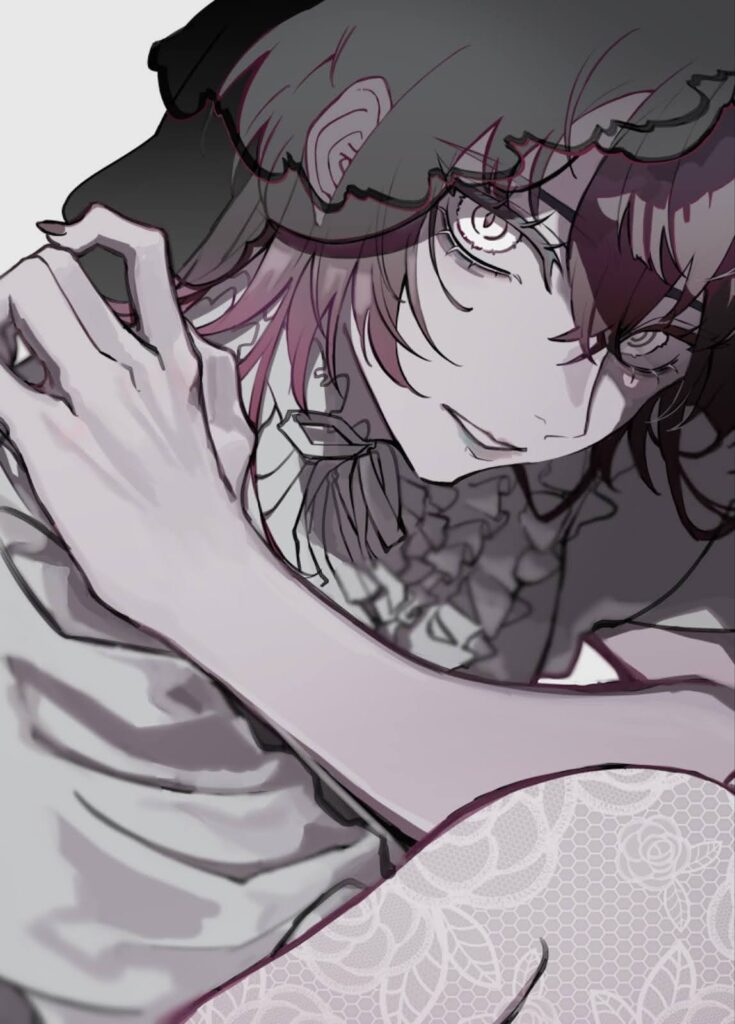
Finding the Shape of Happiness Through Self-Reflection
B – I heard you’ll be holding your first solo exhibition at “OSAKA INTERNATIONAL ART 2025” this year. Will the works exhibited there bring more of your identity as an illustrator rather than as an image director?
ORIHARA – Yes, that’s right. As an image director,I’ve always been closely observing an individual and focusing on drawing out their characteristics at the right angle within certain constraints. So suddenly being given complete creative freedom was quite a challenge from my usual approach. Obviously, there have been many projects where that line was not quite there, but this time, I think it leans heavily toward my illustrator side. In a way, I found it had an element of self-directed image direction.
B – I see, so it was a process of self reflection.
ORIHARA – I think I really allowed myself to dive into “me” – recognizing emotions that had been within me, thinking about the kind of person I had wanted to become, and looking at my surroundings and the reality I live in. I tried to reinterpret these things through a personal lens.
B – I think it sounds more consuming than observing and expressing others. How was it actually?
ORIHARA – I went through various emotions that had been within me, crying and getting angry a lot. It really was a meaningful experience for me which made me realize that it’s ok and natural to be honestly angry with myself for valid reasons.
B – Could you give me an example of what you mean?
ORIHARA – For example, I looked back at works that left a lasting impression on me when I was little and thought “Why did I feel attached to this scene?” “Is there a form of self-love at play there?” “Why did I not like this scene in particular?”. I forced myself to confront and reflect on both the things I truly liked and the things I simply didn’t like.
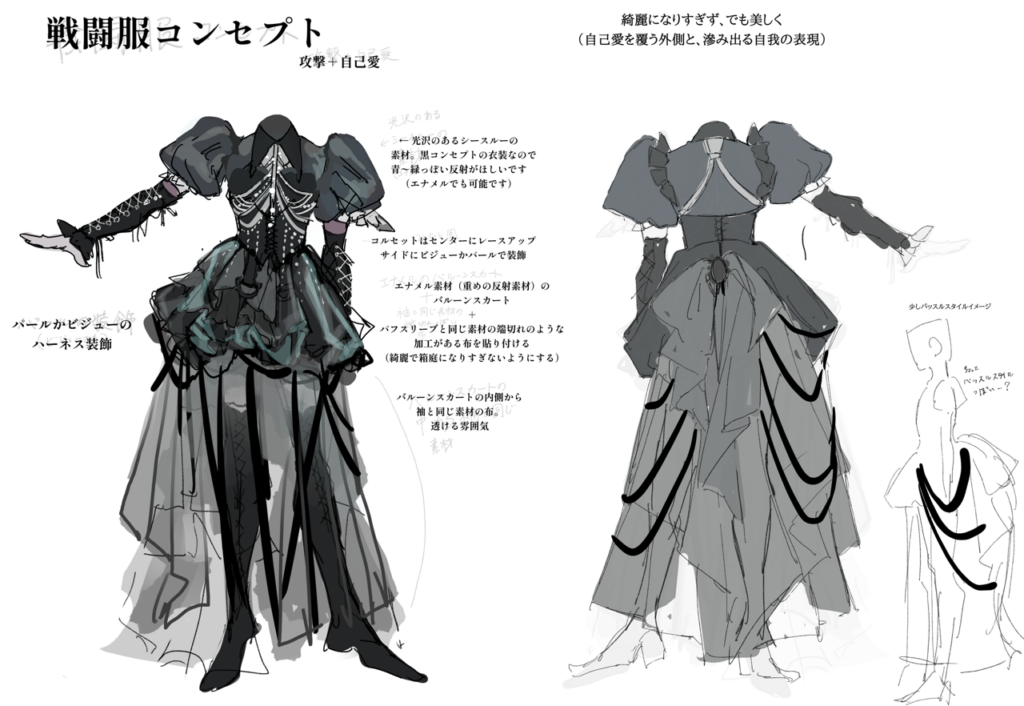
B – Again, it sounds like a very consuming and challenging process. Even so, what is the source of the energy that kept you going?
ORIHARA – I have the very natural desire to be happy, but when I think about how I can get to the point where I feel really happy, I realized that how I’d value my happiness often turns pretty passive, focusing on how others can make me happy rather than the other way around. For instance, whether it’s welcoming a pet or finding a partner, I’ve realized that I often focus on what I can receive – whether it’s a kind word, a moment of comfort, or the healing presence of someone who cares.
B – That’s right.
ORIHARA – This means that when we want to be happy, we naturally rely on others. We desire happiness, yet we’re unwilling to make any effort ourselves. We say we want to be happy, but refuse to offer something to others or even ourselves. That’s not reasonable, is it? Even when we go out with friends because we’re lonely, it’s like having quiet expectations for them to fill that emptiness.
B – Indeed.
ORIHARA – When I ask myself, “Is my friend really enjoying being with me? How long will I keep wishing for happiness just for myself?” I realize that the only way forward is for me to try harder. I want to become a better person. To do that, I need to face the parts of myself that aren’t so great. I need to be able to hold myself accountable, too. Perhaps these thoughts are reflected in my work and my illustrations, though I still don’t feel like I’ve fully achieved it yet.
B – Let’s say, hypothetically, you’ll continue your self-reflection journey and become like the perfect person you envision, how do you think ORIHARA’s artworks would turn out then? Would you no longer be able to create it?
ORIHARA – I wonder that too. But I want to see what’s ahead of it and I don’t think I’ll ever stop drawing or creating no matter what. The very fact that we strive for happiness means we’re always aware of the possibility of falling or not making it. And trying to become a better person means acknowledging that, at my core, I’m someone who’d rather just slack off. I know I’m not the kind of person who can do things perfectly, as naturally as breathing, or like a steady metabolism. Because of that, I believe I’ll continue creating various works, imperfect but genuine in their own way.
B – I think giving up is probably not so hard and you can always take the easy way out if you want to.
ORIHARA – For me, it’s the unwavering feeling that I must never betray my followers or fans on social media. It’s this sense of responsibility that keeps me going, no matter what.
B – In a way, having them involved in your journey.
ORIHARA – They’re like a kind of witness to me really haha Knowing that there are people watching and supporting makes me feel like I have to keep pushing myself. But it’s also true that I could fall apart at any time and I might find reasons not to try something, like inefficiency or inconvenience, or just plain excuses. That’s why I let people hold me to my words. This interview is probably one of those too – a record of what I’ve said.
B – Yes, that’s definitely right.
How much struggle must go into completing a single work? What does it truly mean for her to deliver art pieces? What does it mean to share those with others? Who are the “others”? What kind of people are they, really? And who is she, at her core? Even in moments where most would want to look away or cover their ears, she never runs. I deeply respect that about her – and I can’t help but feel a little envious too. And yes, I worry as well. So I hope she glances back every once in a while so she won’t find a harsh, sharp-eyed judge standing there. In fact, she’ll probably find a crowd of people with warm, gentle eyes. And among them, I’ll be there as well. As one of many who’re truly supporting her, I really look forward to what ORIHARA creates next.
OIA TICKET GIVEAWAY CAMPAIGN NOW LIVE!
Ready to experience the world of ORIHARA “in real life”? Now’s your chance! We’re giving away tickets to OSAKA INTERNATIONAL ART 2025 (May 31 – June 1)! Follow us on SNS and fill out the application form – it’s that easy!
*Limited to 2 tickets per person
【Application Form】
https://forms.gle/pkqXsabFTGctg1Rr7
BAM Official Account
